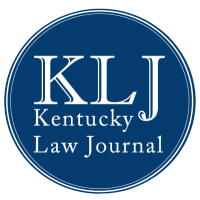Nolan M. Jackson, KLJ Staff Editor [i]
Delaware – the hotbed for business incorporation – got it wrong.[ii] In In re Walt Disney Co. Derivative Litigation, the Delaware Supreme Court reviewed a corporate decision on the compensation owed to the Walt Disney Company chief executive by presuming the disinterestedness of the corporate decision-makers. The Court’s opinion wrongly applied the forgiving business judgment rule where it should have scrutinized the Disney directors’ decision on executive compensation under a less deferential standard that recognizes directors’ interest in decisions affecting executive compensation.The business judgment rule presumes that corporate directors decide upon reasonable informedness, in good faith, and disinterestedly (independently). Where a plaintiff shareholder cannot rebut any of the business judgment predicates, Delaware courts measure the rationality between the directors’ decision and the entity’s interests.[iii] The presumption accords considerable deference to directors’ decisions.[iv] It ignores, however, considerable evidence and practical understanding that directors decide the compensation of their executives interestedly.Scholarship suggests and corporate authorities recognize that directors are inherently interested in the compensation of the executives whom they oversee. For example, corporate executives play a significant role in nominating directors of the board, and directors clearly have an interest in retaining directorships that have become increasingly exorbitant.[v] “[D]irectors who displease a CEO will often find it difficult to retain their board seats. Accordingly, a director who has a material financial incentive to retain his directorship will not really be independent of the CEO.”[vi] Critical of the misapplication of the business judgment rule in Disney, D.A. Jeremy Telman addresses Disney Chairman Michael Eisner’s influence over his board members and financial interest in the board’s approval of a lucrative executive compensation package:Eisner stacked his . . . board of directors with friends and other acquaintances who, though not necessarily beholden to him in a legal sense, were certainly more willing to accede to his wishes and support him unconditionally than truly independent directors . . . Because Eisner's compensation package would have to be at least as generous as that of his subordinate, Eisner and the board he controlled had every reason to make [the executive’s] compensation package as generous as possible (internal citations and quotations omitted).[vii]Moreover, the New York Stock Exchange’s listing standards – presumably to protect against the chief executive’s influence over the corporate board and its decisions on his or her compensation – require a compensation committee of independent directors charged with approving chief executive compensation.[viii] While the listing standards permit the committee to hire a compensation consultant responsible for independent assessment of the executive’s compensation package, some have recognized the executive’s influence over the hiring of such consultants.[ix]Despite evidence of directors’ interest in decisions affecting the corporate executive’s compensation, still Delaware reviews the reasonableness of directors’ decisions on executive compensation under a standard that presumes directors’ disinterestedness. Simply, Delaware wrongly applies the business judgment rule where it should apply a standard of review that recognizes directors’ interest in decisions affecting executive compensation. Such an alternative, the intrinsic fairness standard, for example, rather than presuming directors’ disinterestedness, requires directors to prove the fairness of corporate decisions.[x] While not necessarily advocating for the application of the intrinsic fairness standard to directors’ decisions on executive compensation, I mention intrinsic fairness to demonstrate that alternatives to the business judgment rule exist – alternatives that do not presume disinterestedness in the face of practical understanding that directors decide the compensation of their executives interestedly.Delaware’s jurisprudence misapplies the business judgment rule in review of corporate directors’ decisions on executive compensation. Misapplication harms shareholders and grows inequity. Demonstrated in Disney, the business judgment rule accords deference to directors’ decisions on executive compensation that leave shareholders on the hook for parachute payouts upon termination.[xi] Also, deferential review of directors’ decisions on compensation grows inequality. Judicial deference encourages corporate executives to manipulate directors’ decision-making (i.e. nominate friendly directors to the board; call for exorbitant benefits, bonuses, and options; and hire consultants receptive to the executive’s suggested compensation package); since 1992, the ratio between the average chief executive and the average large-company employee has ballooned to 500:1.[xii]Admittedly the topic of judicial review of directors’ decisions on executive compensation implicates legal and economic considerations that a blog entry cannot accommodate; a fairer discussion would acknowledge the proportionality standard of review as expanded to directors’ decisions on compensation[xiii], more thoroughly describe the intrinsic fairness standard[xiv], and address the “market”[xv] for chief executive compensation. This brief entry, however, must limit its acknowledgments to the standard of review that the state for incorporation applies to directors’ decisions on executive compensation. Practical understanding suggests that Delaware wrongly applies the business judgment rule.
